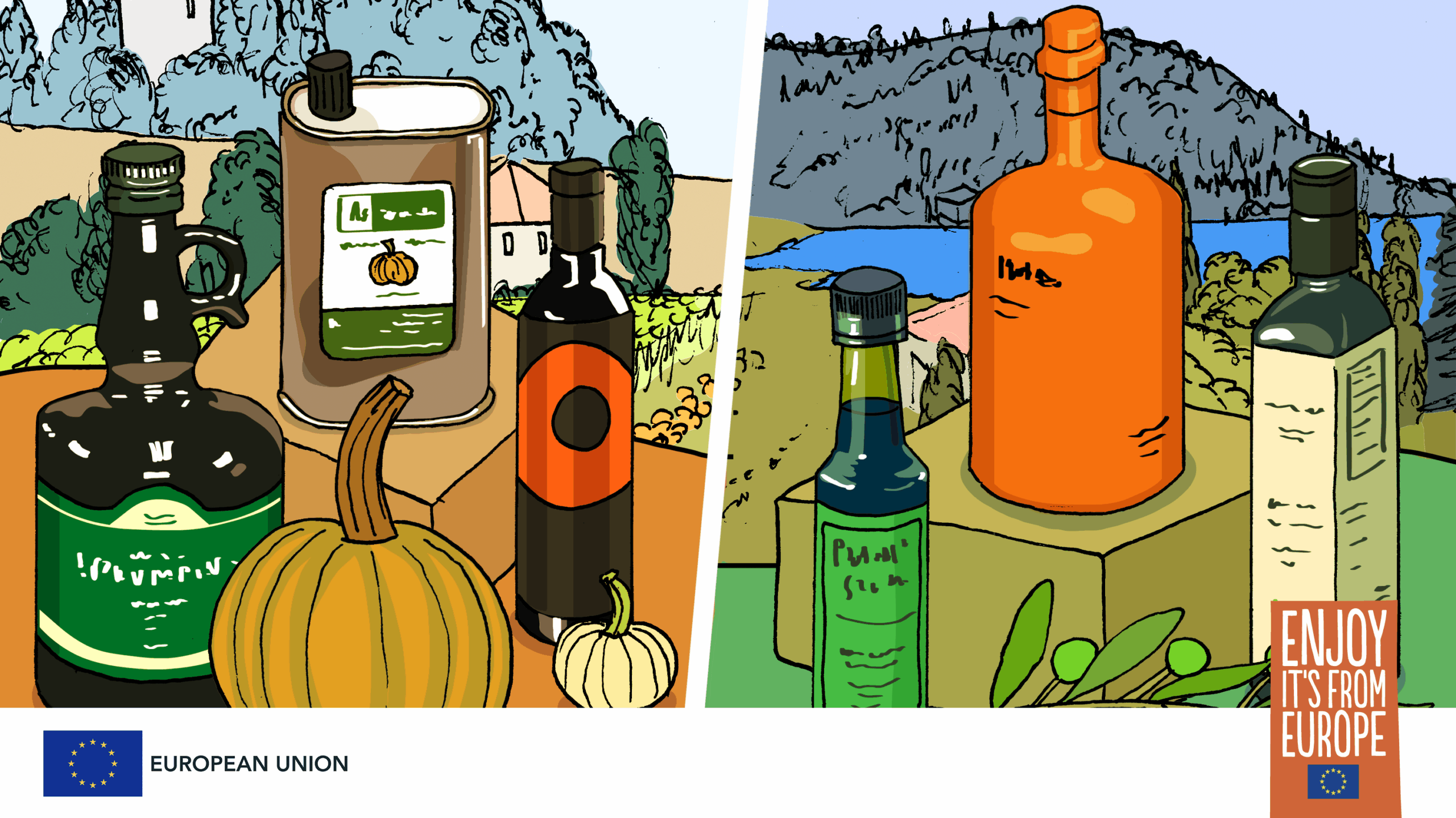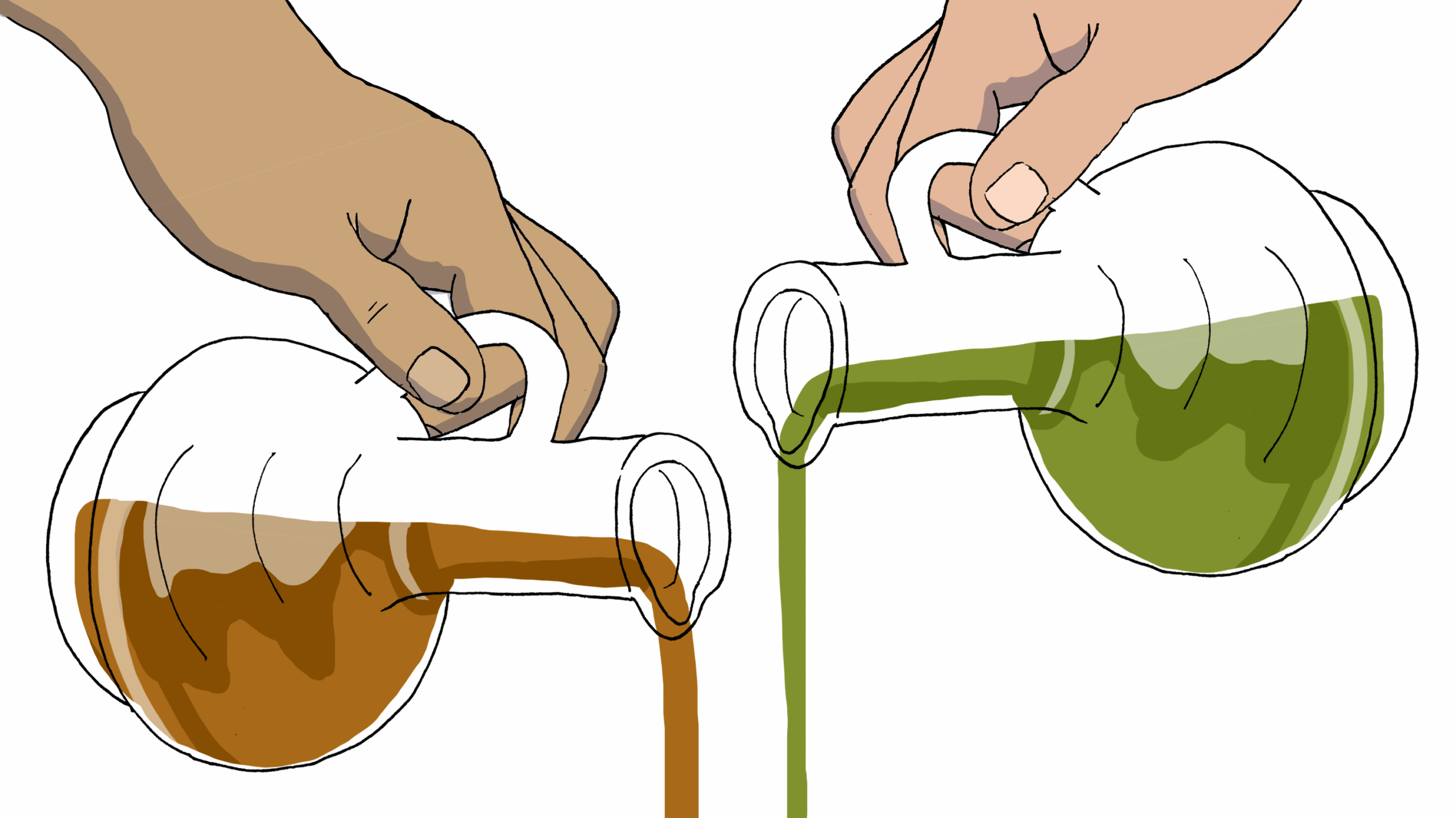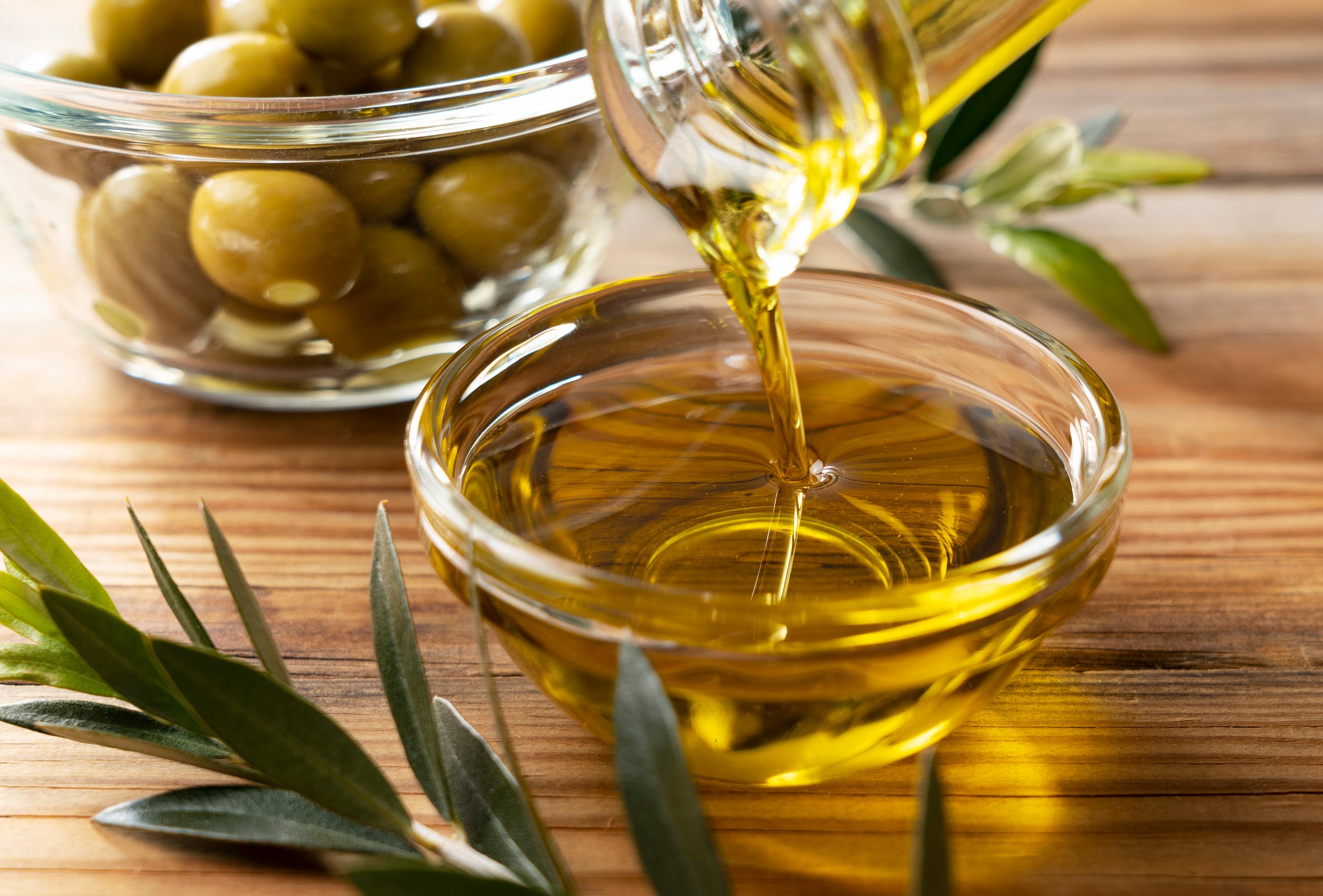
Stryian Pumpkin Seed Oil and Croatian Olive Oil are your pantry’s new secret weapon
Many years ago, the Slovenian chef Ana Roš told me in an interview that the biggest fights between couples in her country revolved around salad dressing. Those from the south preferred olive oil, while those in the north would reach for only one thing: pumpkin seed oil. This culinary divide perfectly illustrates the European Union’s rich array of regional products, where traditional ingredients tell stories of both place and heritage.
When I first tasted Styrian pumpkin seed oil, a staple in the historic Central European region stretching from southern Austria to northern Slovenia, I was immediately hooked—its beautiful deep green hue; its toasty, nutty flavor; the way it coats, even embraces the tongue.
Not all pumpkin seed oil is created equal, which is why the European Union PGI (Protected Geographical Indication) status plays such a crucial role. This special seal ensures that when consumers choose either Austrian Steirisches Kürbiskernöl PGI or Slovenian Štajersko prekmursko bučno olje PGI, they’re getting more than just oil; they’re guaranteed a product of authentic quality and tradition. To earn the PGI seal, the oil must be produced, processed, or prepared within these specific regions in Austria or Slovenia, carrying with it the generational knowledge of local pumpkin farmers, oil producers, and cooks. It’s a testament to both its nature and cultural landscape.
“The farmland there just has great conditions for growing pumpkins,” says Markus Draxler, a native of Austrian Styria and the former longtime maître d’hotel of New York City’s Restaurant Daniel. “Between the environment, the climate, and the turf—you can’t go wrong.” His connection to pumpkin seed oil runs deep – raised in his parents’ inn, he grew up with oil from local family friends, a century-old tradition he continues to support today. “Pumpkin seed oil is close to my heart,” he says, reflecting the deep roots it has in the region’s culinary identity.
Pumpkin seed oil’s deep connection to terroir is reflected in every bottle. It begins with the pumpkins themselves —Cucurbita pepo var. styriaca— which have an accidental mutation that make them particularly well-suited to producing high-quality oil: the seeds don’t have hulls. “That’s like the biggest thing about this product,” explains Carl Schlacher, a second-generation Austrian-American producer. “Over hundreds of years, they bred this pumpkin, and all of a sudden, it turned out the seeds no longer had a hull.” In other words, they come out of the pumpkin ready to be pressed into oil with minimal processing.

The production process couldn’t be simpler: the seeds are washed and dried, then ground and roasted with water and salt before pressing. No refinement, chemical additives, or neutral oils are added—that’s what the PGI seal ensures. Its stunning dark green hue is one of its calling cards. Its singular taste is the other.
“It’s the best flavor on the planet,” says Jan Wilker of Queens’ beloved Ice Cream Window. Growing up in Germany, Wilker first knew pumpkin seed oil as a salad dressing, particularly with mâche, or lamb’s lettuce. “That salad, together with this oil—it’s an awesome mix.” But at his seasonal ice cream stand in Ridgewood, he’s transformed this traditional ingredient into something unexpected.
Their signature “Styrian” flavor, made with Austrian Styrian pumpkin seed oil, has become more than just ice cream—it’s a taste of heritage. While it’s not uncommon to enjoy the oil poured over vanilla ice cream, Ice Cream Window incorporates it directly into the base, adding pine nuts to enhance its natural nuttiness. “The ice cream becomes this beautiful gradient, dark rich green to light green—I just think it looks so beautiful,” Wilker says. “People are always extremely excited when we announce that we have it for the first time every season.”
It’s no coincidence that Ice Cream Window found its home in Ridgewood. This Queens neighborhood has long been home to Central European families, including a significant community of Gottscheers—descendants of Germans who settled in southern Slovenia. “Every Gottscheer that is still alive in this neighborhood, they all still use that oil,” Wilker notes. “They all grew up on that specific oil, so this is their ice cream flavor. We made this ice cream for them.”
Austrian chef Markus Glocker, of Midtown restaurant Koloman, is another fan. “There’s nothing better than folding high-quality pumpkin seed oil into freshly spun vanilla ice cream,” he says, “and if you really want to go over the top, add some white truffle.” The ice cream combination might sound luxurious, but his connection to the oil is deeply rooted in tradition. “I definitely grew up with it—the oil, not the white truffle,” he laughs. “It’s a familiar flavor; it makes me feel like I’m back home.”
The versatility of pumpkin seed oil extends well beyond desserts into savory territory. Glocker created a pumpkin seed oil focaccia served with pumpkin seed-studded salted butter.The key, he explains, is respecting the oil’s delicate nature and low smoke point. “You don’t want to annihilate it,” he says, which is why his focaccia is intentionally thin and baked quickly.
Throughout Central Europe, this oil finds its way into countless traditional dishes. Draxler fondly recalls his mother’s sulz—a beef and vegetable terrine finished with a pumpkin seed oil vinaigrette—and recommends the simple pleasure of drizzling it over scrambled eggs. It brings richness to autumn favorites like pumpkin soup and gnocchi, while in Slovenia, it elevates everything from the babka-like pastry potica to the feta-like cheese beli sir and the local sauerkraut known as kislo zelje.
While pumpkin seed oil tells the story of Central Europe’s northern territories, the country’s southern region shares another European Union-protected treasure: olive oil. In the region of Istria – shared with Croatia, olive oils like Ekstra deviško oljčno olje Slovenske Istre PDO carry the EU’s official designation: Protected Designation of Origin (PDO). This certification requires that every step of production, from harvest to bottling, occurs within the designated area, preserving centuries-old traditions that date back to Ancient Greek and Roman times.

The terroir here tells its own story – the iron-rich local soil, distinguished by its red clay, lends an assertive minerality that has caught the attention of global connoisseurs. The well-respected Rome-based extra virgin olive oil guide Flos Olei consistently ranks Istrian olive oils among its top international products.
Travel further south along Croatia’s Dalmatian coast, and you’ll discover the full expression of Šoltansko maslinovo ulje PDO from the island of Šolta. This distinctive oil, produced just off the coast from Split, has earned international recognition from Tokyo to Dubai for its fresh, grassy flavor and slightly bitter backbone. In local kitchens, they’re cherished in humble preparations – drizzled over grilled fish or blitva, the traditional Croatian side dish of potatoes and swiss chard. This versatility extends to more robust pairings; the oil’s character stands up beautifully to bitter greens like arugula and dandelion, and in my kitchen, it’s become a favorite with broccoli rabe.
The character of Šoltansko maslinovo ulje PDO comes primarily from the Oblica olive variety, a hearty fruit that thrives in the island’s harsh weather conditions. You can almost taste it in the oil’s spicy notes—it’s funny how terroir manifests on the tongue.
While salad dressing choices—pumpkin seed or olive oil—may spark the biggest fights between couples in Slovenia, there’s no such conflict in my own kitchen. Both oils have become trusted allies—enriching warm potato salad, adding unexpected depth to yogurt, and even elevating—don’t judge—tuna salad. The pumpkin seed oil remains my secret weapon for impressing dinner guests, especially with the ice cream trick (for those who haven’t made it to Queens).
But at the end of the day, I always think of Ana Roš—and I have another top chef’s endorsement now, too. “It’s just perfect for salad dressing,” says Glocker, and I agree: there’s really nothing to fight about. When I make salad—and even sometimes with ice cream—I use both.
Visit more-than-food-us.campaign.